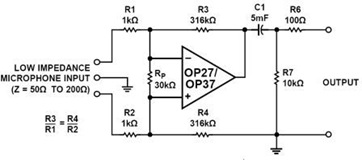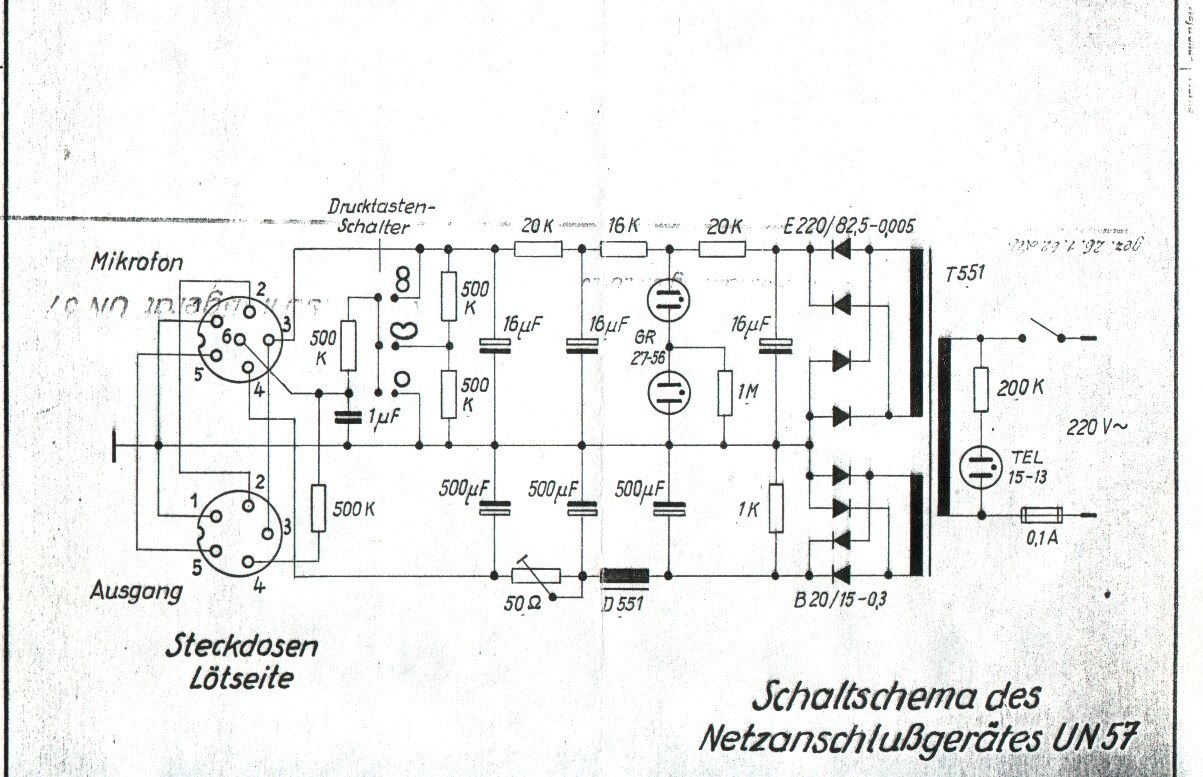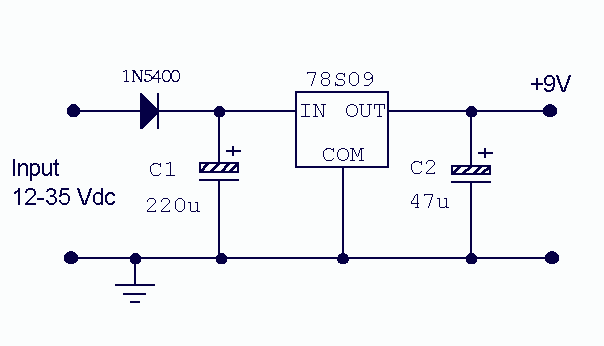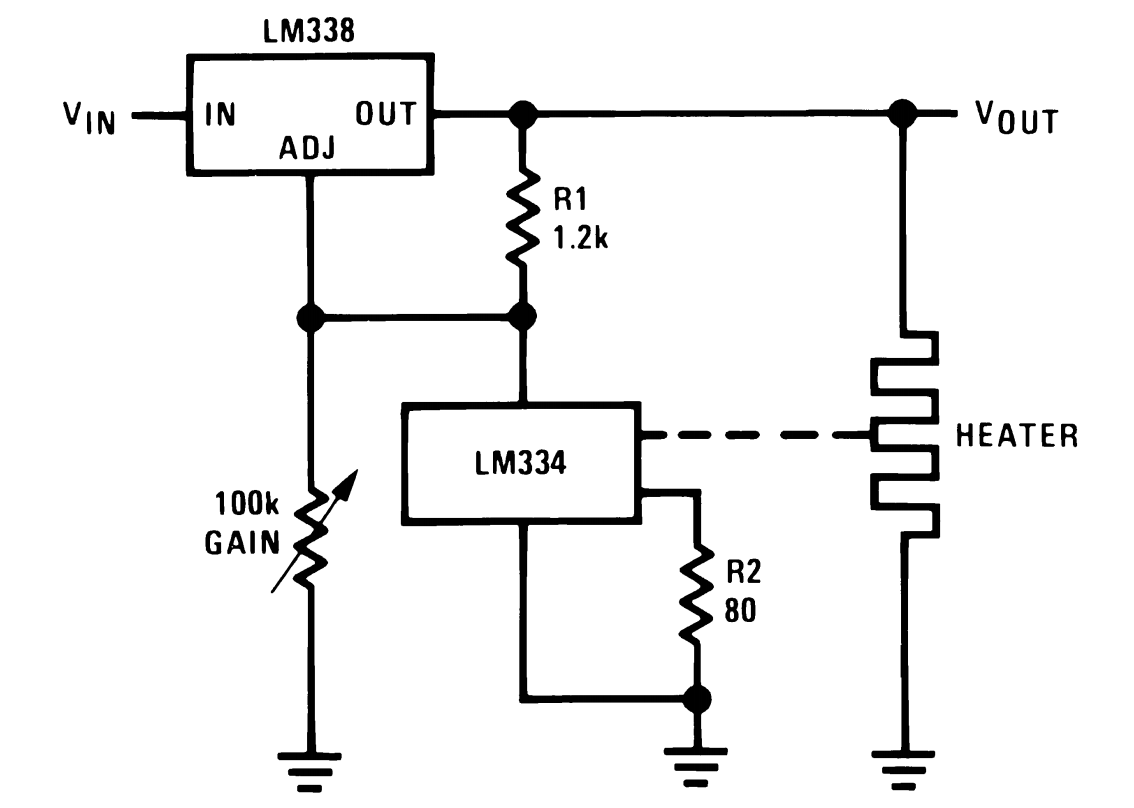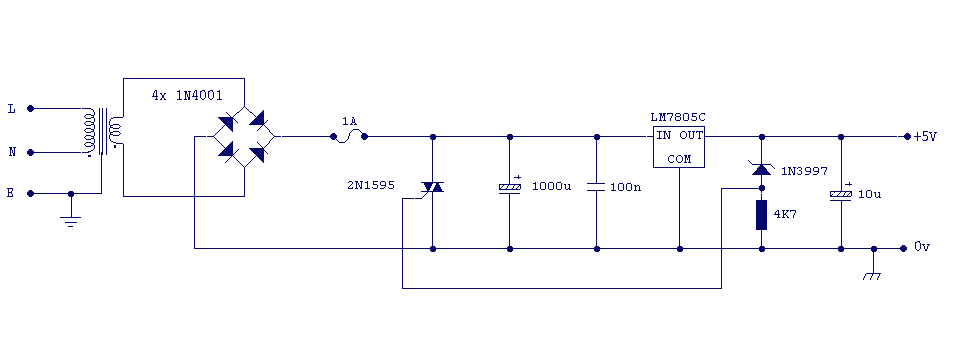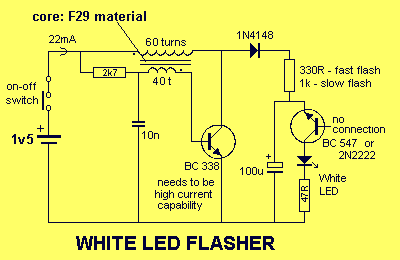
Transformerless PSU
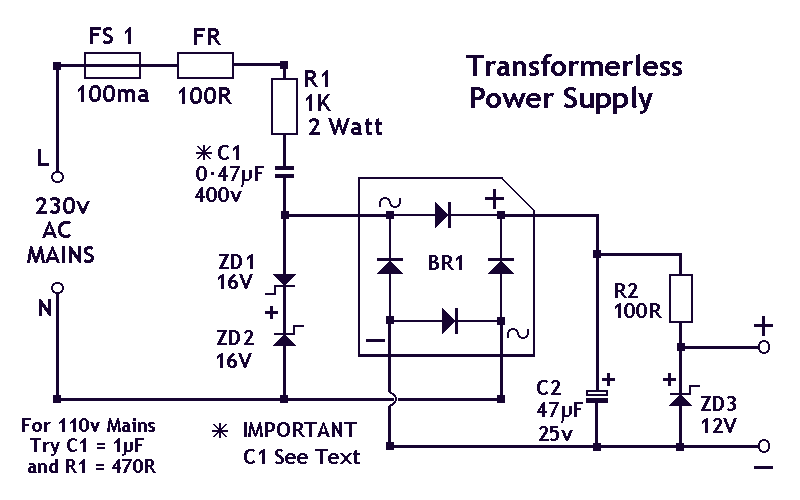
This circuit will supply up to about 20mA at 12 volts. It uses capacitive reactance instead of resistance; and it doesn't generate very much heat. The circuit draws about 30mA AC. Always use a fuse and/or a fusible resistor to be on the safe side. The values given are only a guide. There should be more than enough power available for timers, light-operated switches, temperature controllers, etc., provided that you use an optical isolator as your circuit's output device. If a relay is unavoidable, use one with a mains voltage coil and switch the coil using the optical isolator. C1 should be of the suppressor type; made to be connected directly across the incoming mains supply. They are generally covered with th
This circuit functions as a low-power AC to DC power supply that utilizes capacitive reactance for voltage regulation. The circuit is designed to deliver a maximum output current of approximately 20mA at a regulated output voltage of 12V. The use of capacitive reactance minimizes heat generation compared to traditional resistive voltage drop methods, making it efficient for applications that require low power consumption.
The circuit operates by drawing approximately 30mA from the AC mains, which is a crucial aspect to consider during design to ensure proper component ratings and safety measures. To enhance safety, it is recommended to incorporate a fuse or a fusible resistor in the circuit. This precaution helps protect against overcurrent conditions that could lead to component failure or fire hazards.
The output stage of the circuit is designed to interface with devices such as timers, light-operated switches, or temperature controllers. The inclusion of an optical isolator is essential for ensuring safe and reliable operation, as it provides electrical isolation between the high-voltage AC side and the low-voltage DC output side. This isolation is critical in preventing damage to sensitive components and ensuring user safety.
In scenarios where a relay is necessary for switching applications, it is advised to select a relay with a mains voltage coil. The optical isolator should be used to control the relay coil, providing the necessary isolation and protection.
The capacitor C1, which is specified as a suppressor type, is intended to be connected directly across the incoming AC mains supply. This capacitor plays a vital role in filtering out high-frequency noise and transient voltages, thereby improving the overall stability and performance of the circuit. It is typically encapsulated to ensure safety and reliability under operational conditions.
Overall, this circuit design offers a compact and efficient solution for low-power applications, leveraging capacitive reactance and optical isolation to ensure safety and performance.This circuit will supply up to about 20ma at 12 volts. It uses capacitive reactance instead of resistance; and it doesn`t generate very much heat.The circuit draws about 30ma AC. Always use a fuse and/or a fusible resistor to be on the safe side. The values given are only a guide. There should be more than enough power available for timers, light operated switches, temperature controllers etc, provided that you use an optical isolator as your circuit`s output device.
If a relay is unavoidable, use one with a mains voltage coil and switch the coil using the optical isolator.C1 should be of the `suppressor type`; made to be connected directly across the incoming Mains Supply. They are generally covered with th 🔗 External reference
This circuit functions as a low-power AC to DC power supply that utilizes capacitive reactance for voltage regulation. The circuit is designed to deliver a maximum output current of approximately 20mA at a regulated output voltage of 12V. The use of capacitive reactance minimizes heat generation compared to traditional resistive voltage drop methods, making it efficient for applications that require low power consumption.
The circuit operates by drawing approximately 30mA from the AC mains, which is a crucial aspect to consider during design to ensure proper component ratings and safety measures. To enhance safety, it is recommended to incorporate a fuse or a fusible resistor in the circuit. This precaution helps protect against overcurrent conditions that could lead to component failure or fire hazards.
The output stage of the circuit is designed to interface with devices such as timers, light-operated switches, or temperature controllers. The inclusion of an optical isolator is essential for ensuring safe and reliable operation, as it provides electrical isolation between the high-voltage AC side and the low-voltage DC output side. This isolation is critical in preventing damage to sensitive components and ensuring user safety.
In scenarios where a relay is necessary for switching applications, it is advised to select a relay with a mains voltage coil. The optical isolator should be used to control the relay coil, providing the necessary isolation and protection.
The capacitor C1, which is specified as a suppressor type, is intended to be connected directly across the incoming AC mains supply. This capacitor plays a vital role in filtering out high-frequency noise and transient voltages, thereby improving the overall stability and performance of the circuit. It is typically encapsulated to ensure safety and reliability under operational conditions.
Overall, this circuit design offers a compact and efficient solution for low-power applications, leveraging capacitive reactance and optical isolation to ensure safety and performance.This circuit will supply up to about 20ma at 12 volts. It uses capacitive reactance instead of resistance; and it doesn`t generate very much heat.The circuit draws about 30ma AC. Always use a fuse and/or a fusible resistor to be on the safe side. The values given are only a guide. There should be more than enough power available for timers, light operated switches, temperature controllers etc, provided that you use an optical isolator as your circuit`s output device.
If a relay is unavoidable, use one with a mains voltage coil and switch the coil using the optical isolator.C1 should be of the `suppressor type`; made to be connected directly across the incoming Mains Supply. They are generally covered with th 🔗 External reference
